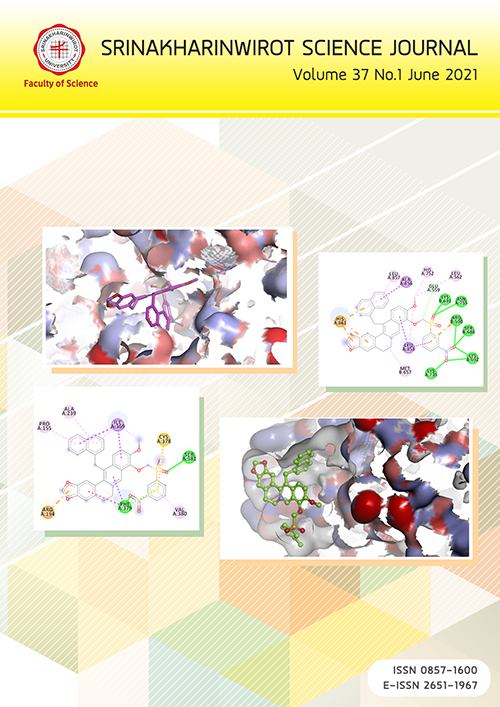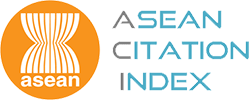Convective Drying of Mango (Mangifera indica L.): Effect of Experimental Parameters on Drying Kinetics and Shrinkage
Keywords:
Convective drying, Swirling flow, Drying kinetic, Computer vision system, ShrinkageAbstract
The aims of this work were to study the effect of swirling and non-swirling air flow on drying kinetics of ripe mango and to investigate the area shrinkage of ripe mango during the drying process by computer vision system (CVS). The CVS used to evaluate the area shrinkage of dried ripe mango is a real-time monitoring method which is precise, labor-saving, non-destructive method. In particular, CVS does not disrupt an equilibrium of heat and mass transfer in the drying chamber. Ripe mangoes were dried at air temperatures of 50, 60, and 70˚C and air velocities of 1.0, 1.5, and 2.0 m2/s for both swirling and non-swirling air flow. The results revealed that the effective moisture diffusivity (Deff), for swirling and non-swirling air flow drying, were (4.48–9.71)x10-9 and (3.41–7.24)x10-9 m2/s, respectively. Moreover, the area shrinkage of swirling air flow drying was 32.64–40.98%, while that of non-swirling air flow drying was 36.45–43.44%. The area shrinkage of dried ripe mango was highest at low air temperature and 1.5 m/s air velocity.Downloads
Download data is not yet available.
Downloads
Published
2021-06-28
How to Cite
Choosri, W., & Choosri, T. (2021). Convective Drying of Mango (Mangifera indica L.): Effect of Experimental Parameters on Drying Kinetics and Shrinkage. Science Essence Journal, 37(1), 86–104. Retrieved from https://ejournals.swu.ac.th/index.php/sej/article/view/13385
Issue
Section
Research Article








